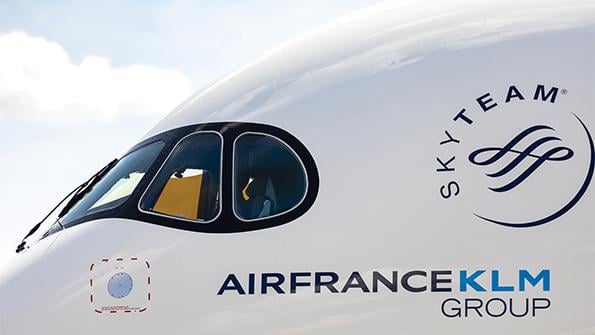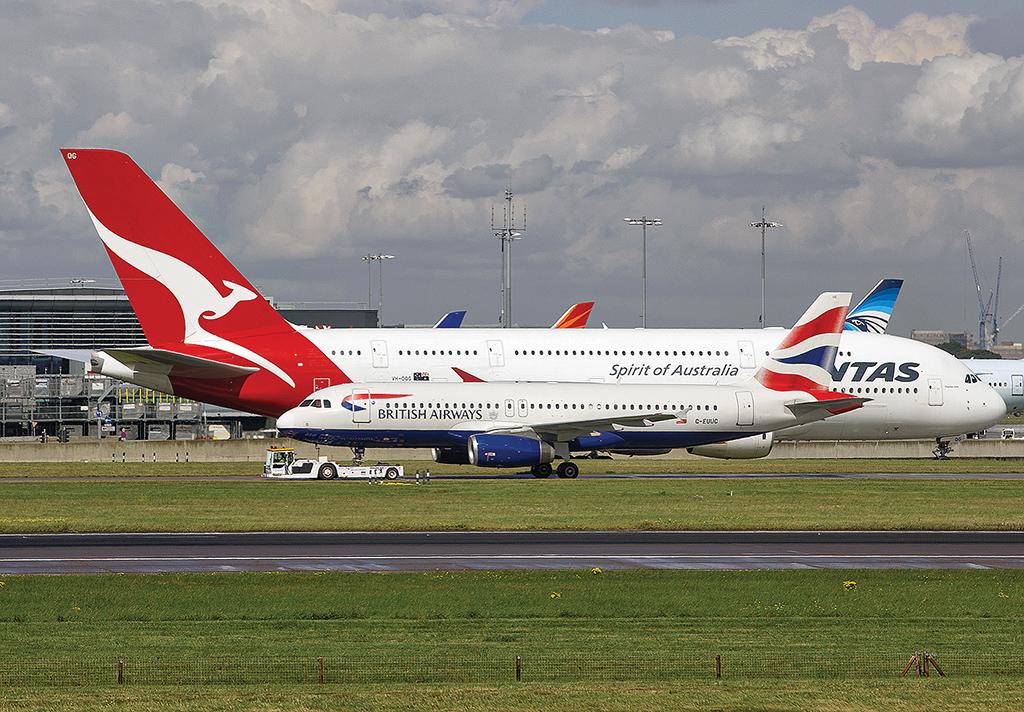Airlines Choose Different Paths For Keeping Pilots Ready

As the global travel downturn led passenger airlines to park aircraft, flight operations departments faced a conundrum: how to cut costs immediately while keeping pilots ready to return promptly when demand improved. A range of variables resulted in a multiplicity of approaches as carriers weighed the interim benefits of cutting staff against the long-term risk of being caught flat-footed when business improved.
“Some airlines didn’t keep people current. They just furloughed them, depending on the different state systems,” says Tanja Harter, technical board director of the European Cockpit Association (ECA). “In some countries, you’re not allowed to work while you’re getting money from [the state]. In others, it’s different. So the approaches in either keeping up or requalifying people have been quite different.”
- Keeping pilots qualified during pandemic poses challenges
- Downturn pits costs against preparedness for traffic rebound
- Many pilots accepting fewer flying hours to save jobs
The hardest-hit carriers rely heavily on long-haul flying, which remains hampered by travel restrictions. Cargo-only flights by passenger aircraft have helped some pilots stay active, but many carriers opted to help offset reduced flying with other ways to keep pilots fresh.
“I know that quite a few operational departments came up with requalification programs based on how long you haven’t been flying and then scheduling different amounts of simulator sessions and [factoring in] whether your license had expired or not, because that leads to slightly different requirements,” Harter says.
Some carriers modeled their programs after familiar scenarios for requalifying pilots after long stints away from work. “That’s a prototype seen fairly often . . . based on previous experiences operators have on long-term absences such as maternity leave or long-term sickness,” Harter says.
Air France, which does not expect to match its 2019 capacity as measured in available seat kilometers until 2024, chose to have its pilots fly or conduct a simulator session at least twice per month.
“Some airlines took the decision to reduce the number of pilots flying during the crisis to match activity levels and will have to requalify their pilots once the recovery comes,” says Jean-Frederic Vacher, a Boeing 787 captain and vice president of crew training for Air France. “It is a choice that has a certain logic in the short term but is more risky when it comes to the recovery. We made the choice to keep all our pilots qualified because we’re eagerly awaiting the recovery. When it comes, we want to be able to reinstate all our flights.”
The simulator sessions are helping Air France’s pilots stay sharp, which the airline says requires more than simply complying with the regulations.
“As an airline, we don’t just aim to meet the minimum requirements,” Vacher says. “In normal times the question of recent experience does not really come up because pilots maintain their recent experience quite naturally. Our analysis was that carrying out one takeoff and landing per month—the minimum required to comply with regulations—might be acceptable in the context of normal activity. But when every single pilot is flying less than usual, that minimum requirement is not sufficient.
“Putting together the pilot rosters has become a bit of a riddle, but we aim to give them all two flights a month, double the minimum,” he adds. “If that isn’t possible, they also do an extra simulator session with an instructor playing the role of [air traffic control] and perhaps [presenting] a complicated scenario such as a technical problem to deal with.”
Vincent Gilles, vice president of the SNPL union that represents most of Air France’s pilots, supports the airline’s approach, as opposed to keeping a few pilots flying normally and grounding the others. For a pilot, the twice-per-month frequency helps maintain proficiency, Gilles says.
“Under that threshold, routine tasks become nonroutine,” he says. “They start taking more mental workload, reducing availability to manage unexpected events and negatively impacting situational awareness.”

Nevertheless, flying less increases the risk of skill degradation for pilots and controllers. “Every player has to take extra safety margins,” Gilles says. “And these margins should be adapted to the situation.”
Instructors play a key role, as they are in position to spot deficiencies with both individual pilots and flight crew pairings. “They can identify trends and propose solutions,” Gilles says. “Unstabilized approaches occur more often due to a lack of manual flying. But this can be corrected in a couple of simulator sessions.”
Qantas recognized early in the pandemic that a different approach was needed to pilot recency, currency and refamiliarization, and so it redesigned some of its programs. The airline revised its return-to-work program and introduced new training for pilots. While the final competency standard—which is approved by the Civil Aviation Safety Authority (CASA)—did not change, Qantas altered how it assists pilots to achieve that standard. For example, a Qantas Boeing 737 pilot must now undergo a six-day course ahead of returning to the skies.
In other aspects of the redesigned programs, initial flights are completed alongside a check and training pilot. Every flight has to have at least one pilot in the flight deck with recent operational experience. Additional mechanisms have been set up to monitor pilot performance on a daily basis.
Qantas’ safety data has remained stable during the pandemic period, the airline says. Pilots who are active are subject to ongoing CASA-sanctioned check processes, and the rate of pilots not passing these checks is significantly less than the pre-COVID rate. The carrier also developed a skills-preservation program for pilots who have been standing down for a long period, such as its Airbus A380 pilots. This includes two days of ground training and flight simulator sessions every 90 days.
Singapore Airlines (SIA) is keeping pilots current through both simulator training sessions and more e-learning, the company says. “An evidence-based training simulator program was implemented in 2020 to ensure all pilots meet SIA’s required competency levels, regardless of flight hours,” the carrier adds. The SIA Group has just over 2,200 active pilots, defined as rostered for flights at least once a month. This is about 90% of the group’s total pilot workforce.
“Except for the A380 fleet, all our pilots are currently actively flying, and their [average] flying hours have been gradually increasing the past few months,” SIA says. “For pilots on fleets not actively flying, they fulfill their respective regulatory requirements in simulators. All pilots must also undergo the required proficiency checks before returning to operational flying.”
Many airlines avoided furloughs by cutting deals with their pilots that leveraged early-retirement options, temporary leaves or reduced hours for those who remained. In many cases, the early-out deals incentivized higher-paid pilots closer to retirement age, helping the airlines trim costs. By agreeing to work fewer hours—and taking de facto pay cuts in the process—pilots ensured more of their peers would stay employed and current through the downturn.
Airlines keeping more pilots by offering reduced hours or short leaves of absence are set up well for a demand rebound, but keeping such a roster current can be more of a challenge. Delta Air Lines modified its training protocols to put pilots who have not flown for 180 days through a “requalification operating experience” that includes being paired with a check airman, a pilot qualified to evaluate competency.
Airlines are used to ramping up or down to match operations with seasonal demand. The pandemic has added a layer of unpredictability that is forcing many to revamp their business-continuity plans unexpectedly.
“It’s pretty hard [for] airlines to plan ahead, because the [travel restrictions] are changing and, of course, bookings and people’s travel plans are changing all the time,” says ECA executive Harter.
Such uncertainty, on top of the generally unsettling environment the pandemic has created for almost everyone, has underscored the importance of mental health resources. Pilots at a few airlines such as Qantas, with its groundbreaking Pilot Assistance Network, have had well-established programs for years. Other carriers have added regular welfare and well-being checks as well as training to support employees’ mental health as part of their pandemic-driven changes.
Some programs focus on work-specific issues, such as ensuring pilots maintain the same level of confidence they had when flying regularly. Others are more holistic, factoring in issues such as the pandemic’s effect on their personal lives.
Programs are also available for those unfortunate enough to lose their jobs. UK-based charity Pilots Together was set up last year to help former British Airways pilots and has expanded its reach. The group offers financial support and networking opportunities for out-of-work pilots. In August, it unveiled #WePilots, a 24/7 crisis support program that connects pilots struggling mentally with trained volunteers via text messaging.










